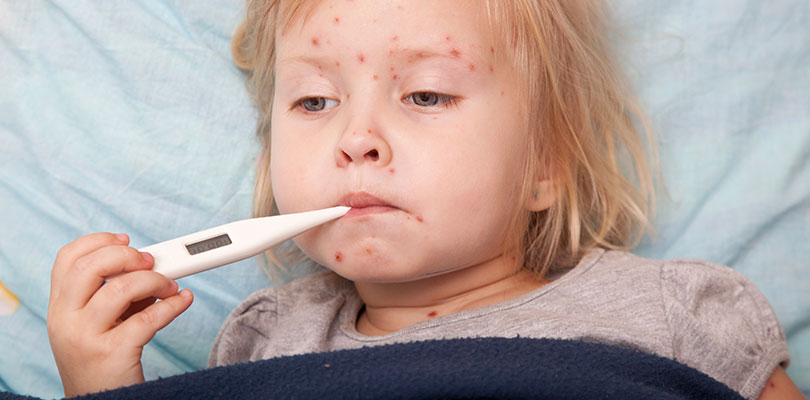What is Inherited Retinal Disease?
Inherited retinal disease is an eye disorder that occurs due to a mutation in an inherited gene. The conditions are usually present from birth. Although the disorders are rare, they are serious and can lead to vision loss, including complete blindness.
It is helpful to learn a little more about the function of the retina to understand how inherited retinal diseases lead to vision loss. The retina in the eye contains rods and cones, which are light-sensitive cells. The cells receive visual information and send it to the brain via the optic nerve. When something interferes with the function of the retina, such as an inherited retinal disease, it can lead to vision problems.
Causes of Retinal Disease
The cause of inherited retinal diseases is a mutation in a gene that affects the function of the retina. The way the mutation affects the retina varies depending on the specific gene.
It is not just one gene that is responsible for retina eye diseases. According to research published in the journal Translational Vision Science and Technology, there are 260 genes linked to inherited retinal diseases. Why the gene mutations develop is unknown.
Symptoms
Inherited retinal diseases are present from birth, but symptoms do not always appear in infancy or childhood. Symptoms of inherited retina diseases can develop at any time in a person’s life.
Although they may vary depending on the disease, typical symptoms may include the following:
- A gradual loss of side vision
- Decreased central vision
- Light sensitivity
- Reduced ability to see at night
- Slower adjustment to changes in light
Many inherited retinal diseases are progressive, which means they get worse over time. In some cases, symptoms may start out slow and gradually get worse. In other instances, symptoms develop quickly and lead to vision loss.
Types of Retinal Diseases
There are different types of inherited retinal eye diseases. Although they all involve the retina, they may progress differently and have various symptoms. Different forms of inherited retinal diseases include:
Retinitis Pigmentosa
Retinitis pigmentosa involves the deterioration of the rod and cone receptors in the retina. Symptoms typically start in late childhood or early adulthood. Symptoms include:
- Night blindness
- Tunnel vision
- Loss of central vision
Eventually, the condition can lead to total blindness.
ITP is an autoimmune disease that causes excessive bruising and bleeding. Here are the main treatment options to look into.
Cone-rod Dystrophy
Cone-rod dystrophy involves deterioration of the cone receptors first and then the rod receptors also deteriorate. The condition usually starts in childhood. Symptoms include:
- Loss of color vision
- Decreased central vision
- A gradual loss of peripheral vision
Juvenile Macular Degeneration
Macular degeneration affects the macula, which is a part of the retina. Age-related macular degeneration occurs most often in adults in their 60s or older, but juvenile macular degeneration occurs in childhood. Symptoms include:
- Spots in the central vision
- Blurry vision
- A gradual loss of vision
Risk Factors
The most significant risk factor for developing an inherited retinal disease is having a parent with the condition. Researchers are still studying whether there are other risk factors for developing the gene mutation. Inherited retinal diseases can affect anyone.
Treatment Options
Eye Exams
Treatment for inherited retinal disease is aimed at stopping or slowing the progression of the disease and persevering as much vision as possible. In some cases, the condition is not diagnosed until it has advanced. Some eye diseases do not have symptoms in the early stages and are only diagnosed through an eye exam. Getting regular eye exams is vital for everyone, but it is even more critical for people that have a family history of retinal diseases.
Genetic Testing
Anyone who finds out they have an inherited retinal disease should get genetic testing done as soon as possible. Genetic tests can identify the gene mutation that causes the disease. Knowing the specific gene mutation helps the doctor determine the best treatment options. It may also open up opportunities to participate in clinical trials that are testing certain treatments.
Gene Therapy
Each type of inherited retinal disease may progress at a different rate. Getting treatment as soon as possible is essential. Gene therapy is usually the best treatment option. Although it will not cure the disease, it can control or slow progression.
Currently, the FDA has approved Luxturna as gene therapy to treat certain inherited retinal eye diseases. The drug works by delivering a replica of a specific gene that is thought to affect the proteins produced in the retina. After the administration of the drug, the retinal cells produce normal proteins that help the retina function more efficiently. It is administered directly into the eye.
In addition, various other types of gene therapy are in different stages of clinical trials. Hopefully, in the future, more treatments will become available to treat inherited retinal diseases and prevent vision loss.
Maintain Overall Health
It is also essential that people with inherited retinal diseases follow guidelines for eye health, such as eating a well-balanced diet, not smoking and protecting their eyes from UV rays. Healthy lifestyle choices help decrease the risk of other eye problems.
Potential vision loss can also lead to various emotional issues, such as fear and depression. Getting support through organizations, such as the Foundation Fighting Blindness, is often helpful in learning ways to cope with the disease.







